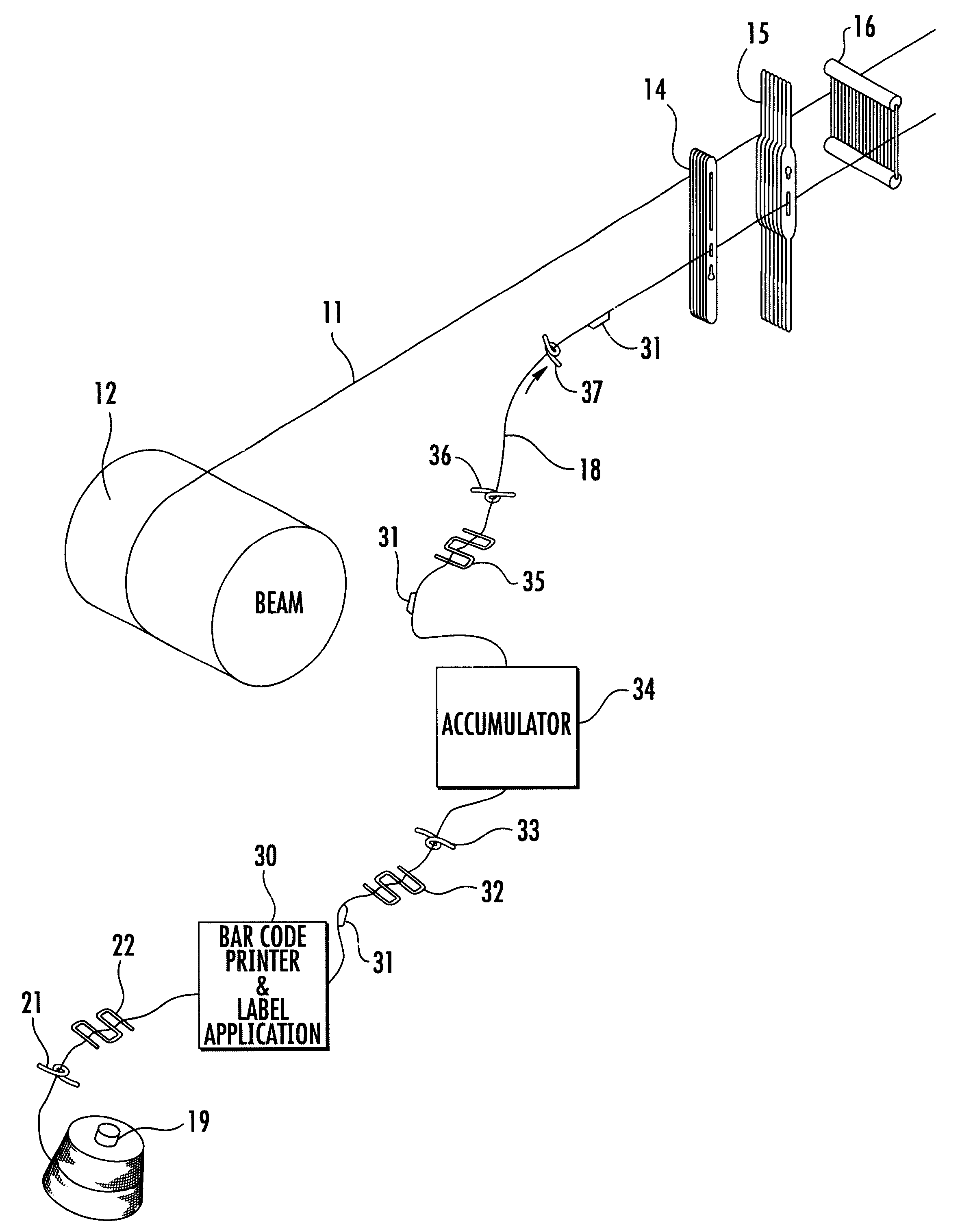ID labeled fabric and method of applying an ID label to fabric at its point of manufacture
a technology of fabric and rolled and flat-folded fabric, applied in the field of id labeled fabric and the method of applying an id label to a fabric, can solve the problems of labor inefficiency, many id labels are either misplaced or lost, cut off or rubbed off the fabric, etc., and achieve the effect of being easily and accurately identified
- Summary
- Abstract
- Description
- Claims
- Application Information
AI Technical Summary
Benefits of technology
Problems solved by technology
Method used
Image
Examples
Embodiment Construction
Referring now specifically to the drawings, a schematic diagram illustrating a method according to the present invention for labeling fabric at its point of manufacture is shown in FIG. 1. The resulting labeled fabric "F", shown in FIG. 2, is readily and accurately identified during subsequent fabric processing and finishing operations. In one preferred embodiment, the fabric "F" is formed of interlacing ends of warp and filling yarn woven together in a conventional manner using conventional textile weaving machinery. In alternative embodiments, the fabric is formed of nonwoven and knit yarn.
For purposes of illustration, FIG. 1 shows a single end of warp yarn 11 carried on a warp beam 12 and fed through a drop wire assembly 14, heddle harness 15, and reed 16. The warp beam 12 actually carries hundreds of ends of warp yarn 11. A separate end of warp yarn 18 is arranged on a carrier 19 located near the warp beam 12. The yarn 18 passes from the carrier 19 through a yarn guide 21 and te...
PUM
 Login to View More
Login to View More Abstract
Description
Claims
Application Information
 Login to View More
Login to View More - R&D
- Intellectual Property
- Life Sciences
- Materials
- Tech Scout
- Unparalleled Data Quality
- Higher Quality Content
- 60% Fewer Hallucinations
Browse by: Latest US Patents, China's latest patents, Technical Efficacy Thesaurus, Application Domain, Technology Topic, Popular Technical Reports.
© 2025 PatSnap. All rights reserved.Legal|Privacy policy|Modern Slavery Act Transparency Statement|Sitemap|About US| Contact US: help@patsnap.com



